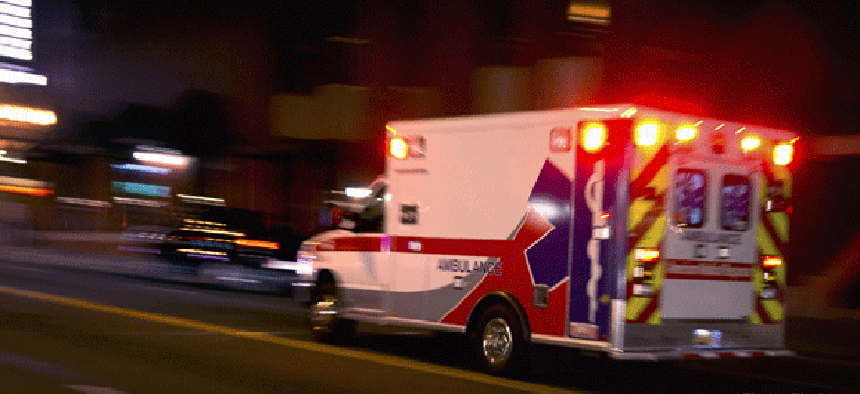How New Orleans limits responders’ COVID exposure


Connecting state and local government leaders
A cloud-based solution lets paramedics video chat with residents to assess their symptoms and movements without risking unnecessary exposure in the field.
The first coronavirus case in New Orleans was diagnosed March 9 and numbers grew exponentially in the following days. To help manage the influx of 911 callers who feared they were infected, the Orleans Parish Communication District (OPCD) rolled out a cloud-based platform less than a week later that let paramedics videoconference and text with concerned residents.
OPCD deployed Carbyne’s c-Lite software, which allowed call takers to see the location of 911 callers so they could give “more accurate locations of callers in need,” OCPD Executive Director Tyrell Morris wrote in an email to GCN. “The software also allows paramedics stationed at OPCD to place video calls with residents to track their symptoms and movements without added risk of exposure to first responders in the field.”
Using the platform from Carbyne, which tweaked its existing technology for coronavirus response, responders can invite callers to video chat similar to an iPhone’s FaceTime capabilities. The caller accepts the invitation and then medical staff can evaluate symptoms remotely.
Because Carbyne’s platform is cloud based, OPCD was able to load the technology remotely and not interrupt their existing emergency communication channels.
“How can we reduce the need of people to attend health centers by giving them the ability to do remote systems screening without physically meeting with the doctors?” Carbyne Founder and CEO Amir Elichai asked. “By looking at your face, experts can get a lot of information about the symptoms that you have and … if you need to stay home” or go to a hospital or clinic.
Responders also can invite callers to chat via text messages. This makes it easier for those with hearing impairments or who may be too out of breath to talk.
The platform automatically tracks callers’ locations, so if they have COVID-19 symptoms, the information immediately goes into a centralized GIS that lets the city see how the virus is spreading. City leaders can look at the map and plan their next steps accordingly.
The platform integrates with existing systems, and Carbyne stores no data, in accordance with the General Data Protection Regulation on privacy. Although the company protects the data in transit, the entity in charge of it at the end of the call is the receiving agency -- OPCD, in New Orleans’ case. It handles the city’s emergency and 311 systems.
“At the end of the call, nothing is staying on your device and all the information is delivered to the agency,” Elichai said.
Callers do not need an app to activate the videoconferencing or texting capabilities -- just a mobile device on which they can receive a text message with a link that, when opened and approved, enables those forms of communications.
The platform can ease the burden on 911 call centers as the number of calls increases along with coronavirus cases because Carbyne users can work remotely. “I as a doctor can [be] in Massachusetts or Texas and give services to people in New York City,” Elichai said. “I as a call taker don’t need to go to the command-and-control [center]. I can literally take 911 calls from home. This is a huge change.”
Although in the outbreak has spiked in some areas of New Orleans, the number of COVID-19 patients admitted to a hospital has been drastically reduced.
"We had the fastest-growing outbreak in the world for a couple of weeks," Dr. Joseph Kanter, assistant state health officer with the Louisiana Department of Health, told WDSU News May 25. "We were seeing about 100 new cases of COVID-19 admitted to the hospital every day. That number yesterday was nine.
So while 911 calls have lessened, OPCD has seen “a massive increase in 311/non-emergency calls, though -- up by 300%,” Morris said, attributing the increase to additional services added to NOLA-311, including reporting self-quarantine, illegal evictions and large gatherings along with signups for hot meal delivery.
“Providing services such as video calls to self-quarantined residents (thanks to software like Carbyne’s), or using Quick Base to rapidly update service request instances like reporting illegal evictions or signing up for hot meal deliveries, is completely unprecedented, but shows the adaptability needed by modern [emergency communications centers] to adopt cutting-edge technology in order to act quickly and decisively to meet the needs of our citizens during a time of great uncertainty,” Morris said.
NEXT STORY: JEDI delay slows DOD’s AI push




